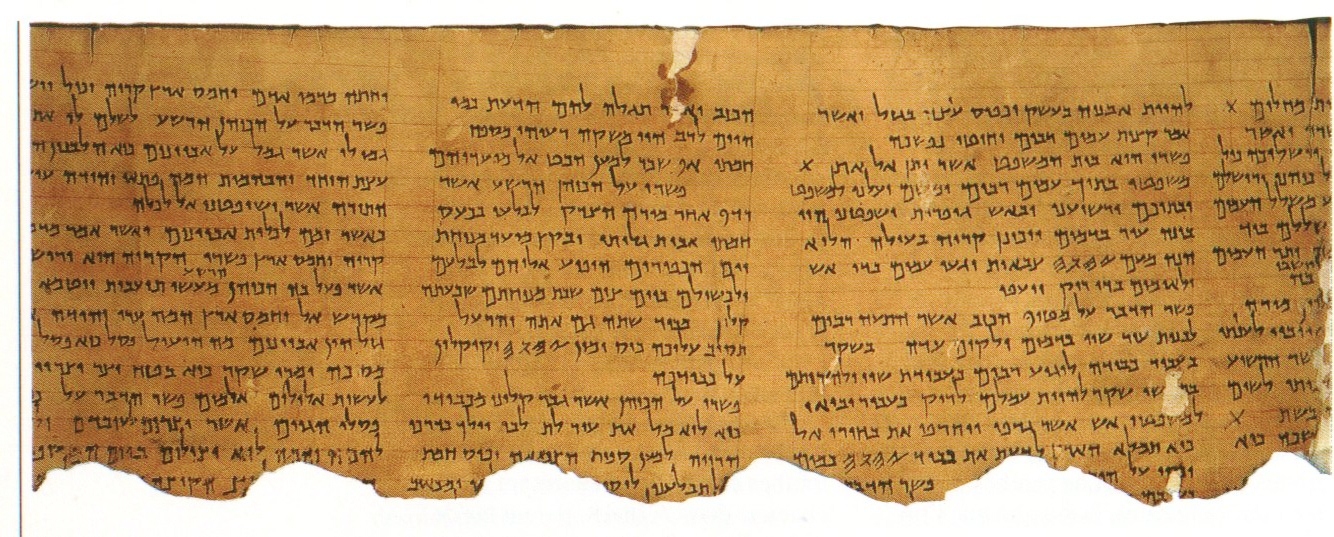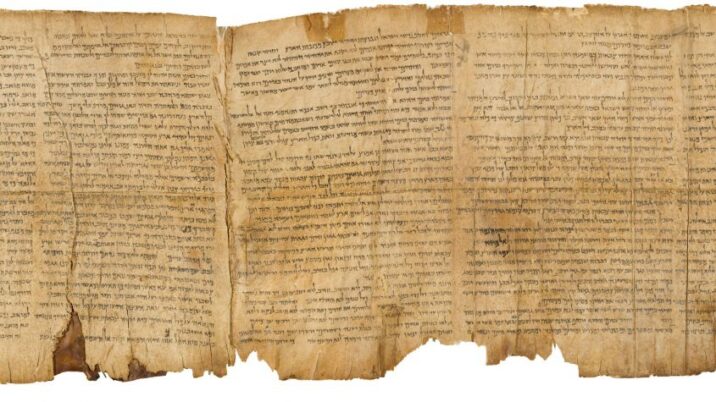The big news of last week was the announcement by Hebrew University, and Craig Evans here on theLAB, that a 12th Dead Sea Scrolls (DSS) cave was discovered just last month.
But why are the DSS important?
I’ll look at three main reasons below. But first we need to ask, what are the DSS?
What are the Dead Sea Scrolls?
The term ‘Dead Sea Scrolls’ actually refers to a wealth of archaeological treasures discovered in a specific region of the land of Israel, running from Jericho to Masada (a straight-line distance just under 40 miles, and about 66 by car). These finds trace their origins back to the fourth century BCE, and up to the second century CE. Various inhabitants of this region left traces of their existence behind, including ancient ruins, pottery, caves, parchments, papyri, linen, coins, tools, and more.
History of Discovery
One day in late 1946 or early 1947, a 15-year-old shepherd boy wandered into a wadi, or canyon, looking for a lost sheep. When a well-placed toss of a rock into a cave mouth on the cliffs brought the sound of breaking pottery, he went to investigate. The scrolls he found and brought back to show his family were the first of the most important finds in modern biblical archeology. This wadi, which has yielded the majority of the manuscript treasures, is the now-famous Wadi Qumran located near the northwest shore of the Dead Sea.
The area was thoroughly excavated in the 1940’s and 50’s by both local and Western explorers and archaeologists. Although hundreds of caves were explored, only eleven had yielded manuscript treasures now identified as the Dead Sea Scrolls. That number has now increased to 12 with the recent archaeological work undertaken by Randall Price, Oren Gutfield, and Ahiad Ovadia. Although they did not find any entire scrolls with writing, the pottery fragments, parchments, papyri, and linen coverings indicate clearly that this twelfth cave deserves to be numbered with the other eleven.
The DSS Manuscripts
To date, there have been 600 manuscripts discovered among the 12 caves. Cave 4, however, contained the greatest concentration, yielding 400 manuscripts of which 100 are biblical. The only book of the OT not represented in this collection is Esther. One of the greatest treasures discovered among the DSS is a nearly complete scroll of Isaiah, known as the Great Isaiah Scroll (1QIsa). The biblical material in the DSS collection is an important witness to the textual transmission of the OT.
But biblical material makes up a smaller percentage of the texts. The DSS also contain a large amount of apocryphal and pseudepigraphal works. These include Tobit, Ecclesiasticus, the Letter of Jeremiah, 1 Enoch, Jubilees, and The Testament of Levi. In additional to these, there are the so-called Sectarian Manuscripts which concern life in the religious community at Qumran, including the Manual of Discipline and the Thanksgiving Hymns.
Finally, the DSS collection includes commentaries on various books of the OT, including the famous Habakkuk commentary. This text presents fascinating insights into the interpretive practices of the Qumran community. The commentary follows a verse-by-verse approach, and centers on a figure called “The Teacher of Righteousness” who is persecuted by a wicked priest.

And yet as interesting as the DSS are in archaeological and historical terms, why are they significant to biblical scholars today?
Why do the Scrolls matter?
We can consider the importance of the Dead Sea Scrolls along three main points of interest: texts, people, and hermeneutics.
The History of Textual Transmission
First, the texts enjoy a unique position in the history of the transmission of scripture. They are the oldest surviving manuscript witnesses to the OT, nearly 1,000 years older than the earliest known witnesses prior to 1946. This is significant in and of itself, but it also means that the DSS can be compared to other textual witnesses, including the Septuagint and Masoretic Text, to gain insight both into pedantic issues of grammar, punctuation, and spelling, and into bigger-picture questions of pre-Christian Judaism in the intertestamental period.
Indeed, one of the most significant aspects from a textual perspective is that the DSS confirm the early history of the Masoretic form of the text of the OT. Prior to the discovery of the DSS, the MT was dated by many scholars to, at the earliest, the 2nd century CE. Now, however, the evidence points to a provenance many centuries prior.
This gives modern biblical scholars a deeper level of confidence that the text before them, in their critical editions or otherwise, has been faithfully and accurately transmitted by real people living centuries ago, who were motivated by legitimate zeal for God.
Real People in History
This bring us to our second point, that there were real people behind the production of the DSS who left footprints of their existence in the scrolls. The way of life followed by the Qumran community is proscribed in texts such as the Manual of Discipline, and the songs they sang together are found in the Thanksgiving Hymns. Thus the DSS offer a perpetual reminder of the vital importance of remembering that real flesh and blood people once inhabited this region, and lived their lives in strict adherence to their particular interpretation of the OT.
The scriptures were a life-and-death matter for these people. They took their sacred books so seriously that they were willing to live in the desert regions of Israel and separate from the Temple in Jerusalem. That alone was a radical departure from the typical Judaism of the day, matched only by the radical interpretations of scripture presented by the authors of the NT.
Ancient Interpretations of Scripture
This leads to our third and final point concerning hermeneutics. As an interesting comparison, while the Qumran community took to the arid regions of ancient Palestine to practice their particular form of Judaism, the Christian community initially tried to remain within the ancient synagogue, viewing Christ as the long-awaited Messiah now come for his people. Both groups relied upon their particular views of the OT scriptures to shape and inform their approach to daily life, and the life to come.
What we find in the DSS non-biblical manuscripts is the attempt by pious Jews to grasp the significance of the OT for the times in which they lived. Their commentaries on various books of the OT and their documents dictating life in the community attest to the power of scripture in the lives of these people so many years ago. However, there are crucial differences between the interpretive practices of the Qumran scribes and the writers of the NT books, and herein lies the greatest potential for fruitful research into the DSS.
Scholarly work on either the DSS or the NT requires engagement with the other set of texts. One cannot do serious research into the NT without considering the DSS, nor the other way around. These texts are both crucial witnesses to the Judaism leading up to and during the time of Jesus.
They mutually inform each other on many issues, including the sayings of Jesus; Messianic expectations during the Roman occupation; and the concept of “grace” in the Second Temple period. A particularly good example of this last point is the recent study by John Barclay, Paul and the Gift, where the DSS present a key dialogue partner with Paul on the theme of God’s charis, or grace.
Why the DSS should matter to you
In sum, the DSS are an essential witness to the text, people, and interpretive practices of at least one type of Judaism in the period preceding the arrival of Christ in ancient Palestine. That alone is enough to warrant, at the very least, a strong familiarity with their history and teachings.
To begin your foray into the DSS, I suggest starting with the classic translation and introductions in Geza Vermes’s The Dead Sea Scrolls in English. For a helpful recent introduction to the DSS, get a hold of Joseph Fitzmyer’s The Impact of the Dead Sea Scrolls. Both resources, and many more, are fully tagged and searchable in Logos 7.
But apart from reading a translation and some introductory material, how does one best study the DSS, especially when doing serious research? That will be the topic of my next post.





